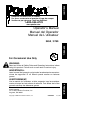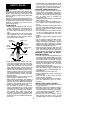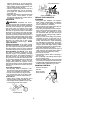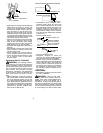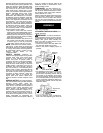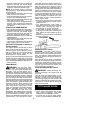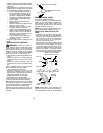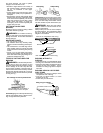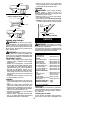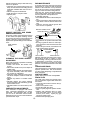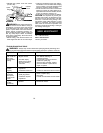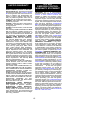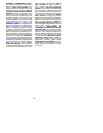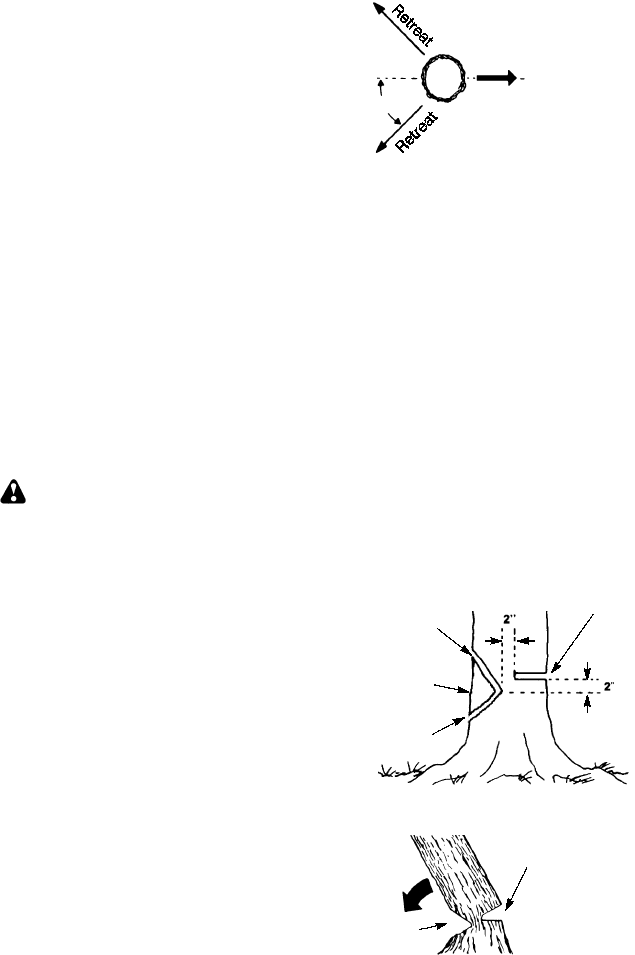
10
S
Stop the saw if the c hain strikes a foreign
object. Inspect the saw and repair parts as
necessary.
S
Keep the c hain out of dirt and sand. E ven a
small amount of di rt will quickly dul l a chain
and increase the p os s ibility of k ic k ba c k .
S
Practice cutting a few small logs us-
ing the following techniques to get
the “feel” of using your saw before
you begin a major sawing operation.
S
Squeeze the t hrottle trigger and al-
low the engine to reach full speed
before cutting.
S
Begin cutting with the saw frame
against the log.
S
Keep the engine at full speed the en-
tire time you are cutting.
S
Allow the chain to cut for you. Exert
only light downward pressure.
S
Release the throttle trigger as soon
as t he cut is completed, allowing the
engine to idle. If you run the saw at
full throttle without a cutting load, un-
necessary wear can occur.
S
To avoid losing control when cut is
complete, do not put pressure on
saw at end of cut.
S
Stop the engine before setting the saw
down.
TREE FELLING TECHNIQUES
WARNING:
Check for broken or
dead branches which can fall while cutting
causing serious injury. Donot cut nearbuild-
ings or electrical wires ifyou donot know the
direction of tree fall, atnight since youwill not
be able to see well, or during bad weather
such as rain, snow, or strong winds, etc.
S
Carefully planyoursawing operation inad-
vance.
S
Cleartheworkarea. You needa cleararea
all around the tree so youcan have secure
footing.
S
Study the natural conditions that can
cause the tree to fall in a particular direc-
tion.
Natural conditions that can cause a tree to
fall in a particular direction include:
S
The wind direction and speed.
S
The lean of the tree. The lean of a tree
might not be apparent due to uneven or
sloping terrain. Use aplumb orlevel t o de-
termine the direction of tree lean.
S
Weight and branches on one side.
S
Surrounding trees and obstacles.
Look for dec ay and rot. If the trunk is rotted,
it can snap and f all toward the operat or.
Make sure ther e is enough room for the treeto
fall. Maintain a dis ta nc e o f
2-1/2
tree lengths
from the near est per son or other objects. En-
gine noise can drow n out a warning cal l.
Remove dirt, stones, loose bark, nails, sta-
ples, and wire fromthe treewhere cuts areto
be m ade.
Direction of Fall
45
_
Plan a clear retreat path
FELLING LARGE TREES
(6 inches in diameter or larger)
The notch method is used to fell l arge trees.
Anotch is cuton the side ofthe tree inthe de-
sired direction of fall. After a felling cut is
made on the opposite side o f tree, the tree
will tend to fall into the notch.
NOTE
: If the tree has large buttress roots,
remove them before making the notch.
NOTCH CUT AND FELLING THE
TREE
S
Make notch cut by cutting the top of the
notch first. Cut through
1/3
of the diameter
ofthe tree. Nextcomplete thenotch bycut-
ting the bottom of the notch. See illustra-
tion. Once the notch is cut remove the
notch of wood f rom the tree.
S
After removing the cutout of wood, make
the felling cut on the opposite side of the
notch. This is done by making a cut about
two inches higher than the center of the
notch. This will leave enough uncut wood
between the felling cut and the notch to
form a hinge. This hinge will help prevent
the tree from falling in the wrong direction.
Notch
First cut
Second cut
Final cut here 2 inches
above center of notch.
Opening
of felling
cut
Closing o f
notch
Hinge holds tree on stump and helps
control fall
NOTE
: Before felling cut is complete, use
wedges to open the cut when necessary to
control the direction of fall. To avoid kickback



